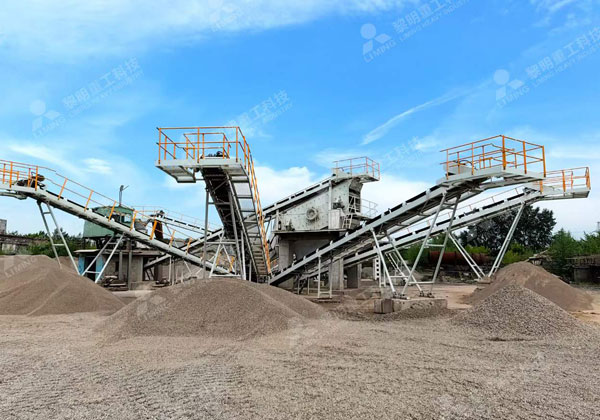When discussing the capacity of a mineral vibrating screen, it’s important to consider various factors that influence its performance. These factors include the type of material being processed, the screen’s design and dimensions, the operating conditions, and the specific requirements of the application. Understanding these aspects is crucial for optimizing the screen’s capacity to achieve the desired throughput and efficiency.

Material Characteristics:
The capacity of a vibrating screen is significantly affected by the type of mineral being processed. Different materials have varying densities, particle sizes, and moisture contents, all of which influence how easily the material can pass through the screen. Fine, dry materials with uniform particle sizes tend to be processed more efficiently, allowing for a higher capacity. Conversely, materials with high moisture content or larger, irregular particles may clog the screen openings or require slower feed rates, reducing capacity.
Screen Design and Dimensions:
The design of the vibrating screen, including its length, width, and the number of decks, plays a critical role in determining its capacity. A longer screen length provides more opportunities for particles to find an opening and pass through, which generally increases capacity. Similarly, a wider screen can handle a larger volume of material at once. The number of decks also influences capacity; multi-deck screens can separate materials into different sizes simultaneously, effectively increasing the overall capacity of the screening process.
Operating Conditions:
The capacity of a vibrating screen is also influenced by its operating conditions, such as vibration frequency, amplitude, and angle of inclination. Higher vibration frequencies and amplitudes can increase the movement of particles, enhancing the screening process and potentially increasing capacity. The angle of inclination of the screen is another important factor; steeper angles generally result in faster material flow, which can increase throughput but may reduce screening efficiency. Optimizing these parameters is essential for balancing capacity with accuracy in material separation.
Feed Rate and Distribution:
The manner in which material is fed onto the vibrating screen can significantly impact its capacity. A consistent and well-distributed feed ensures that the entire screening surface is utilized, leading to higher capacity. If the feed is uneven or concentrated in one area, it can lead to overloading in specific sections of the screen, reducing overall efficiency and capacity. Additionally, the feed rate must be carefully controlled to match the screen’s capacity; too high a feed rate can overwhelm the screen, while too low a rate can underutilize its potential.
Application-Specific Considerations:
Finally, the capacity of a vibrating screen is influenced by the specific requirements of the application it is being used for. Different industries, such as mining, construction, or agriculture, may require screens with varying capacities depending on the scale of operation and the desired output. Customizing the screen design to meet these specific needs—whether through selecting the appropriate screen mesh size, adjusting operational parameters, or choosing the right type of vibrating mechanism—can maximize capacity and ensure the screen meets the demands of the application.

